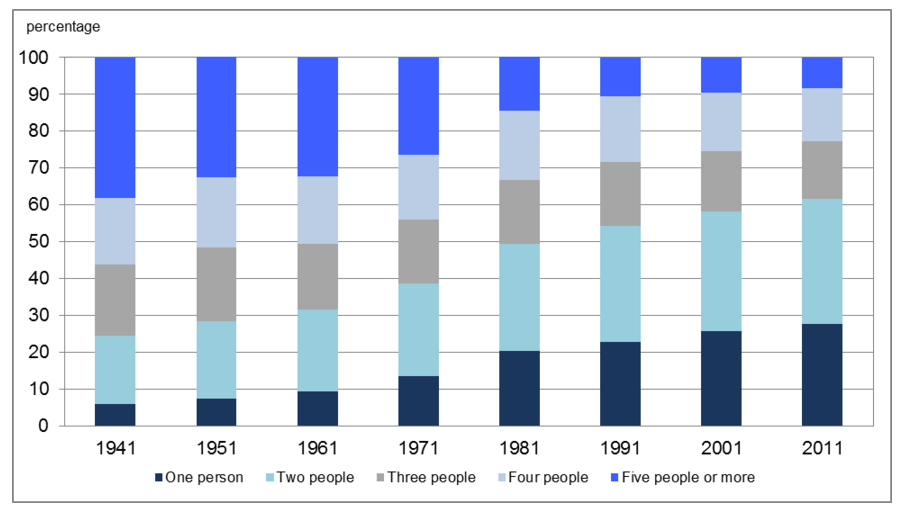
People & Culture
Kahkiihtwaam ee-pee-kiiweehtataahk: Bringing it back home again
The story of how a critically endangered Indigenous language can be saved
- 6310 words
- 26 minutes
This article is over 5 years old and may contain outdated information.
People & Culture

For the first time in history, there are more people living alone in Canada than there are couples living with children.
A new report released today in Statistics Canada’s Canadian Megatrends journal shows that in 2011, the number of one-person households in Canada surpassed the number of households consisting of a couple and at least one child under the age of 24 — a significant demographic shift that is changing the way society looks at everything from housing to senior healthcare.
StatsCan’s analysis shows that as the number of households has increased, the number of people living within them has consistently decreased.
In 1851, there were fewer than half a million households in Canada, with an average of 6.2 people living in each one. In the early 20th century, families typically had more children, but household composition was also fluid, often including relatives, boarders and other individuals on a temporary or long-term basis.
By 1941, the number of households had swelled to 2.6 million, while the average number of members had dropped to 4.3.
In 2011, there were 13.3 million households in Canada, each one comprised of an average of just 2.5 people. Couples living without children currently represent the largest share of Canadian household demographics.

There are a number of factors driving the trend towards smaller households, including lower fertility, delayed childbirth and high rates of separation and divorce, which often results in the creation of two smaller households following the breakup of a larger one.
Longer life expectancy and improvements in healthcare are also resulting in greater numbers of smaller households, as seniors are increasingly likely to opt stay in their own home, either alone or with a spouse, rather than moving into group care.
The increase in one- and two-person households is not only fuelling Canada’s hot housing market, StatsCan reported, but is also changing the way responsibility for the care of children and seniors is shared among Canadians.
Are you passionate about Canadian geography?
You can support Canadian Geographic in 3 ways:

People & Culture
The story of how a critically endangered Indigenous language can be saved

Places
In Banff National Park, Alberta, as in protected areas across the country, managers find it difficult to balance the desire of people to experience wilderness with an imperative to conserve it

People & Culture
A century after the first woman was elected to the Canadian Parliament, one of the most prominent figures in present-day politics shares her thoughts on how to amplify diverse voices in the Commons

People & Culture
In honour of Asian Heritage Month, CBC Quebec journalists asked Asian Canadians how they carry their culture